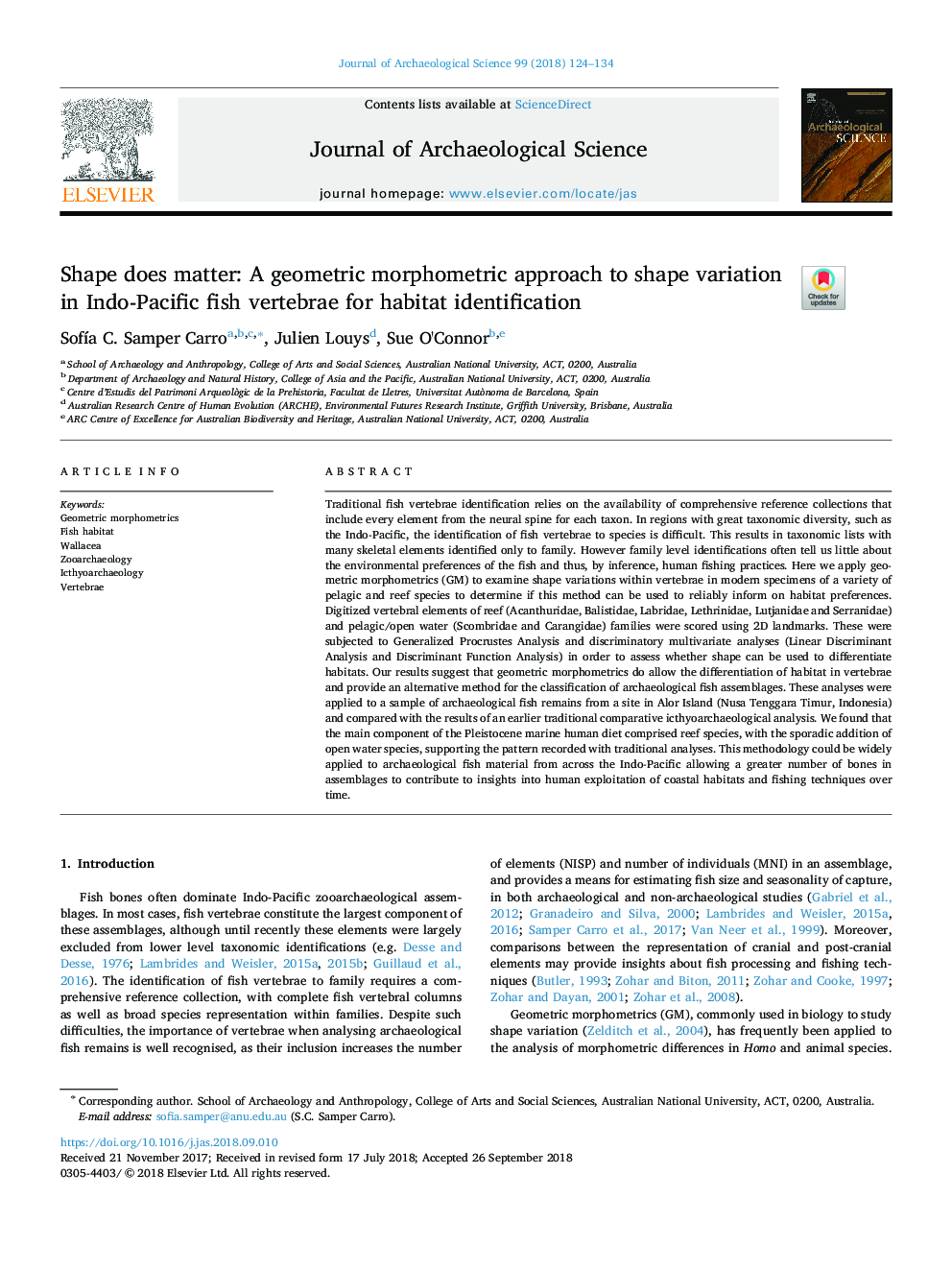| کد مقاله | کد نشریه | سال انتشار | مقاله انگلیسی | نسخه تمام متن |
|---|---|---|---|---|
| 11029764 | 1646449 | 2018 | 11 صفحه PDF | دانلود رایگان |
عنوان انگلیسی مقاله ISI
Shape does matter: A geometric morphometric approach to shape variation in Indo-Pacific fish vertebrae for habitat identification
ترجمه فارسی عنوان
شکل ماده: یک رویکرد هندسی مورفومتریک برای شکل گیری تنوع در مهره های ماهی هند-اقیانوس آرام برای شناسایی زیستگاه
دانلود مقاله + سفارش ترجمه
دانلود مقاله ISI انگلیسی
رایگان برای ایرانیان
کلمات کلیدی
مورفومترهای هندسی زیستگاه ماهی، والاسه، باغ وحش ایکهی آرش شناسی، مهره ها
موضوعات مرتبط
مهندسی و علوم پایه
مهندسی مواد
دانش مواد (عمومی)
چکیده انگلیسی
Traditional fish vertebrae identification relies on the availability of comprehensive reference collections that include every element from the neural spine for each taxon. In regions with great taxonomic diversity, such as the Indo-Pacific, the identification of fish vertebrae to species is difficult. This results in taxonomic lists with many skeletal elements identified only to family. However family level identifications often tell us little about the environmental preferences of the fish and thus, by inference, human fishing practices. Here we apply geometric morphometrics (GM) to examine shape variations within vertebrae in modern specimens of a variety of pelagic and reef species to determine if this method can be used to reliably inform on habitat preferences. Digitized vertebral elements of reef (Acanthuridae, Balistidae, Labridae, Lethrinidae, Lutjanidae and Serranidae) and pelagic/open water (Scombridae and Carangidae) families were scored using 2D landmarks. These were subjected to Generalized Procrustes Analysis and discriminatory multivariate analyses (Linear Discriminant Analysis and Discriminant Function Analysis) in order to assess whether shape can be used to differentiate habitats. Our results suggest that geometric morphometrics do allow the differentiation of habitat in vertebrae and provide an alternative method for the classification of archaeological fish assemblages. These analyses were applied to a sample of archaeological fish remains from a site in Alor Island (Nusa Tenggara Timur, Indonesia) and compared with the results of an earlier traditional comparative icthyoarchaeological analysis. We found that the main component of the Pleistocene marine human diet comprised reef species, with the sporadic addition of open water species, supporting the pattern recorded with traditional analyses. This methodology could be widely applied to archaeological fish material from across the Indo-Pacific allowing a greater number of bones in assemblages to contribute to insights into human exploitation of coastal habitats and fishing techniques over time.
ناشر
Database: Elsevier - ScienceDirect (ساینس دایرکت)
Journal: Journal of Archaeological Science - Volume 99, November 2018, Pages 124-134
Journal: Journal of Archaeological Science - Volume 99, November 2018, Pages 124-134
نویسندگان
SofÃa C. Samper Carro, Julien Louys, Sue O'Connor,
